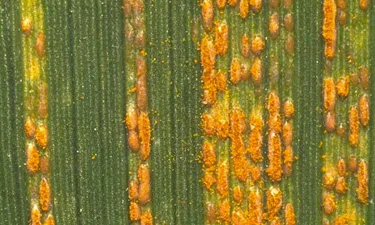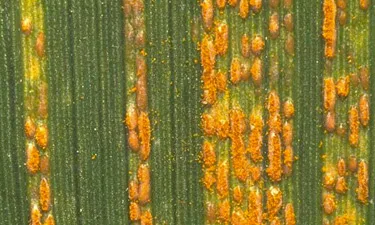What is Yellow Rust?
Grain affected by yellow rust becomes shrivelled and, in a seed crop, germination can be impaired. Favourable factors for the disease are cool (10º to 15ºC) and humid conditions, and late applications of nitrogen. Epidemics can occur very rapidly with severe infection developing within a week. High temperatures (above 20ºC) will check an epidemic.
How to spot Yellow Rust
Close up of yellow rust pustules
Barley leaf infected with yellow rust
The first yellow pustules usually appear at the apex of the leaves. They develop into thin brown lines, producing a striping effect on the leaves. Glumes, awns and grains can also be infected. Rust fungi can only grow on green plant tissue, and it survives the harvest period on tillers and volunteers. Yellow rust spreads to autumn-sown plants via wind-borne spores.
How to control Yellow Rust
Barley yellow rust is much easier to control than wheat yellow rust due to the softer leaf tissue being more easily accessible to fungicides. A well-timed protectant fungicide based on prothioconazole and designed to control Rhynchosporium and net blotch, such as Fandango (prothioconazole + fluoxastrobin), will generally take care of yellow rust.
For crops with higher yield potential or those which are under increased disease pressure SiltraXpro (prothioconazole + bixafen) has been shown to boost yields even further than Fandango.




